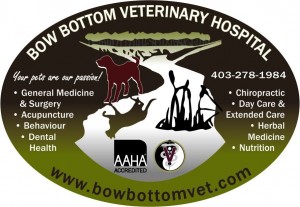
10 TIPS ON COPING WITH THE LOSS OF YOUR PET
The death of a pet brings about some of the most painful and difficult decisions a pet owner must face. Following are some of the most commonly asked questions about pet euthanasia.
When is it time to euthanize my pet?
Your veterinarian is the best judge of your pet’s physical condition: whether an illness or injury is terminal; whether surgery or medication would significantly prolong your pet’s life, and for how long.
However, you are the best judge of the day-to-day quality of your pet’s life. You should be able to tell if he/she is suffering unreasonably, or if he/she is still finding pleasure in life despite his/her condition. If a pet still has a good appetite, responds to attention, seeks his/her owner’s company, participates in play or family life and is able to get up to relieve itself many pet owners feel that their pet is still enjoying life and living with dignity. If, on the other hand, a pet is in constant pain, undergoing difficult or stressful treatments, is unresponsive to affection or seemingly unaware of his/her surroundings a caring pet owner will probably wish to end this beloved companion’s suffering.
Evaluate your pet’s health honestly and unselfishly with your veterinarian. Nothing can make this decision an easy one, but it is often the final act of love you can make on his/her behalf.
Should I stay during euthanasia?
Many people feel that this is the final gesture of love and comfort one can show for an animal friend. Some have felt relief and comfort by staying, as they were able to see for themselves that the pet did not suffer, that he/she passed away gently and peacefully and that he/she is truly gone. For many, not witnessing the death – and perhaps not viewing the body afterwards – made it difficult to accept in their hearts that the pet was truly dead, making it more difficult to deal with their grief later.
Euthanasia can be traumatic. You must ask yourself openly and honestly if you are prepared to handle it. If you feel that your emotions will not be in control, you are more likely to upset the animal than comfort her. These emotions are natural and no cause for shame.
Your veterinarian will also be involved in this decision. Some clinics invite the owner to be present – others are less enthusiastic. If you feel strongly about staying and your veterinarian is unwillingly, you may wish to have the euthanasia done elsewhere.
Some veterinarians are willing to euthanize a pet at home. Others have come to the owner’s car to administer the injection. Again, discuss these options with your veterinarian.
What do I do now?
When a pet dies you face the question of how to handle the remains. When you are upset and grieving it may seem easiest to leave the pet at the clinic and allow the staff to deal with the next steps. Some find this the best choice. Others feel that a pet deserves a more formal ceremony.
Cremation is an inexpensive option that allows you to handle your pet’s remains as you wish: to bury them (even in the city), Scatter them, leave them in a columbarium, or keep them in a decorative urn.
Home burial is a common choice. However, city regulations usually prohibit pet burials. This is also not a good choice if you rent or move frequently.
For many people a pet cemetery provides a sense of permanence and security, bringing formality and dignity to a pet burial.
Check with your veterinarian for options in your area. When possible, it is better to make plans in advance than in the midst of your grief.
I hurt so much! Am I over-reacting?
Intense grief over the loss if a pet is completely normal and natural. Every pet owner who considers a pet a beloved friend and companion, a true family member, goes through what you are experiencing now. You are not being overly sentimental, weak, crazy, or foolish to grieve.
You may have spent years with this animal. During this time he/she was a constant part of your life, always ready to give you love, comfort and companionship. Pets provide unconditional, non-judgmental love. So don’t be surprised if you feel devastated by the loss of such a powerful relationship, no matter how long or brief it was.
What should I tell my children?
Some people fear that their children can’t handle the news of the death of a pet. You are the best judge of what your children can and cannot understand, based upon their ages and personalities – but don’t underestimate them! You may find that by being candid with your children about what happened to the pet you now have an opportunity to address some of the fears and misconceptions they have about death and dying.
Honesty is important. Avoid using the term “put to sleep”, as many children have difficulty understanding the difference between this and ordinary sleep. Don’t say, “he/she went away” or “he/she didn’t want to stay here anymore”. A child may then wait in anguish for the pet to return or wonder what he or she did to make the pet unhappy enough to leave. Make it clear that the pet will not come back and that he/she is at peace wherever he/she is.
Accept your child’s grief as you accept your own. Never assume that a child is too young or too old to grieve. Don’t try to hide your sorrow from them or they may fear that you don’t understand theirs. Discuss the loss with the entire family, giving everyone support in working through their emotional pain.
What can I do about my feelings?
The most important step you can take is to be honest with yourself about what you are feeling. Don’t deny that you are feeling pain or that you feel guilty or angry. Only by looking at these feelings and coming to terms with them can you begin to work through them.
You have a right to feel pain, guilt or anger. Someone you love has died. You are going to feel alone and bereaved. Acknowledge those feelings first, then ask yourself whether the circumstances justify them.
Locking away your grief doesn’t make it go away. Express it. Cry, scream, pound the floor, talk it out – do whatever helps you the most. Reminisce about the good times with your pet and the pleasure of his/her company. This will help you understand what the pet meant to you and clarify the significance of your loss.
Many people find it helpful to express their memories and feelings in stories, poems or letters to the departed pet. Other coping techniques include rearranging your schedule to fill in the times you once spent with the pet, removing the pet’s things from sight (though some find that keeping the pet’s things in view is helpful instead), preparing some form of memorial such as a photo collage, and talking to others about your loss.
Who can I talk to?
If your family or friends love pets they’ll understand what you’re going through. Don’t hide your feelings from them in an attempt to appear strong and calm. If your friends don’t see your need for comfort, they won’t be able to provide it! Working through your feelings with another person is one of the best ways to put them in perspective and learn how to handle them. Find someone you can talk with about your pet, someone who won’t be uncomfortable with your tears and grief. Remember, your grief is just as genuine and deserving of comfort and help as grief over loss of a human companion.
Should I get a new pet right away?
For most people, the answer is “no”. Generally, we need time to work through grief and loss to help us come to terms with our emotions before getting another companion animal. If these emotions are not resolved, you may find yourself resenting the new pet for seemingly trying to take the place of the old one. Your expectations of the new pet may be unreasonable; thus compromising both your needs and those of the new animal.
It is also not a good idea to get a look-alike pet. Comparisons become more likely when the animal looks much like the pet that is gone. Often, getting a look-alike pet is a sign that you haven’t accepted the loss of your pet and are trying to replace him/her.
A new pet should be acquired for his/her own sake; to be loved and accepted for his/her own special qualities. Select an animal that you can build another long and loving relationship with when everyone in the home is ready – because this is what living with a pet is all about.
Will my other pets grieve?
Just as you react to the loss of a family member, your other pets notice the absence of their companion. Pets recognize every change in the household. They often form strong attachments to one another, so you may find that the survivor of the bonded pair grieves for his/her companion. Cats grieve for missing dogs and dogs grieve for missing cats. Affection and grief are not species specific. You may need to give the surviving pet(s) a great deal of extra attention and love to help him/her/them through this period. You may also find this helps you through your own sorrow more quickly than expected.
What can I expect to feel?
Different people experience grief in different ways. Besides your sorrow and loss, you may experience guilt, anger, denial, and/or depression.
Guilt may occur if you feel you were somehow responsible for your pet’s death – the “if only I’d been more careful” syndrome. It is pointless to burden yourself with the responsibility of the illness or accident that claimed your pet’s life. Weighing yourself down with guilt only makes it more difficult to work through your loss.
Denial is difficulty accepting that the pet is really gone. It’s hard to imagine that he/she won’t come greet you or that he/she won’t need his/her evening meal. Some pet owners carry this normal reaction to extremes, and worry that the pet is still alive and suffering somewhere. Others find it difficult to bring a new pet into their life because they feel it violates the memory of the deceased one.
Anger may be directed at the illness that killed the pet or any people associated with the pet’s death. Sometimes anger is justified but carried to an extreme; it only distracts you from the important task of resolving your grief.
Depression is a natural consequence of grief and, if unchecked, can leave you powerless to cope with your feelings. Extreme depression robs you of energy, even the energy to get up in the morning. Dwelling on your sorrow without working on its resolution can spiral into a painful trap in which your grief only becomes more bitter.

![BBVH LOGO NEWEST MARCH 2012[1]](https://www.bowbottomvet.com/files/2012/12/BBVH-LOGO-NEWEST-MARCH-20121-e1365787486724.jpg)


